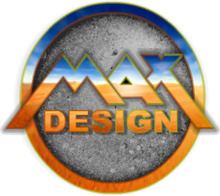Products Video games Founded 1991 | Defunct 2004 Ceased operations 2004 | |
 | ||
Former type Offene Erwerbsges. (OEG) Founder Albert Lasser, Martin Lasser, Wilfried Reiter Key people Albert Lasser, Martin Lasser, Wilfried Reiter Video games | ||
Max Design was an Austrian game developer located in Schladming who developed various games like the Anno series. In 2004 the company abandoned its activities while selling all property including all of their game title licence-rights to Sunflowers – one of the companies they co-developed and -published with before on Anno 1503 and Anno 1602.
Contents
After the closing in 2004 the founders took a leave of absence and are since 2006 again active in the video game sector with the new company "Red Monkeys".
Company history
Max Design was founded in 1991 by the brothers Albert Lasser and Martin Lasser together with Wilfried Reiter.
The company became known for its challenging business simulation games.
Max Design developed and initiated while later conjointly with Sunflowers Interactive Entertainment Software released game 1602 marked even in two ways an edge. Selling about two million copies, it was by then most successful Austrian video game. It laid the foundation for the Anno series. Along with the sequel titles there was sold about 4.2 million copies as of April 2006. Sunflowers secured itself the first shares of Max Design within the cooperation. Otherwise, the continuing shift of balance of power between those two companies heading at Sunflowers was a lot discussed within the fan community with the appearance of Anno 1503.
After twelve years Max Design left the game industry on April 15, 2004. As per press release this is a matter of an adjustment phase which duration is uncertainly. All employees except the founding members were laid off. In the same year the company fully ceased all its activities. The Anno-series was continued – while under its control – by Sunflowers in cooperation with Related Designs.
In an interview, one of the company's founder later declared, after twelve years of development the core team was "tired' and needed some time for a re-orientation.
List of developed or released games
Other
For the game's music of 1869 and Burntime was Hannes Seifert responsible, one of the later founders and CEO's of neo Software, who also made the music on several other games at this time. For his success Der Clou! Max Design also acted as the publisher.
With Petko Max Design tried in the middle of the nineties to place an adventure. A playable demo was still released but the game has never gone gold.
